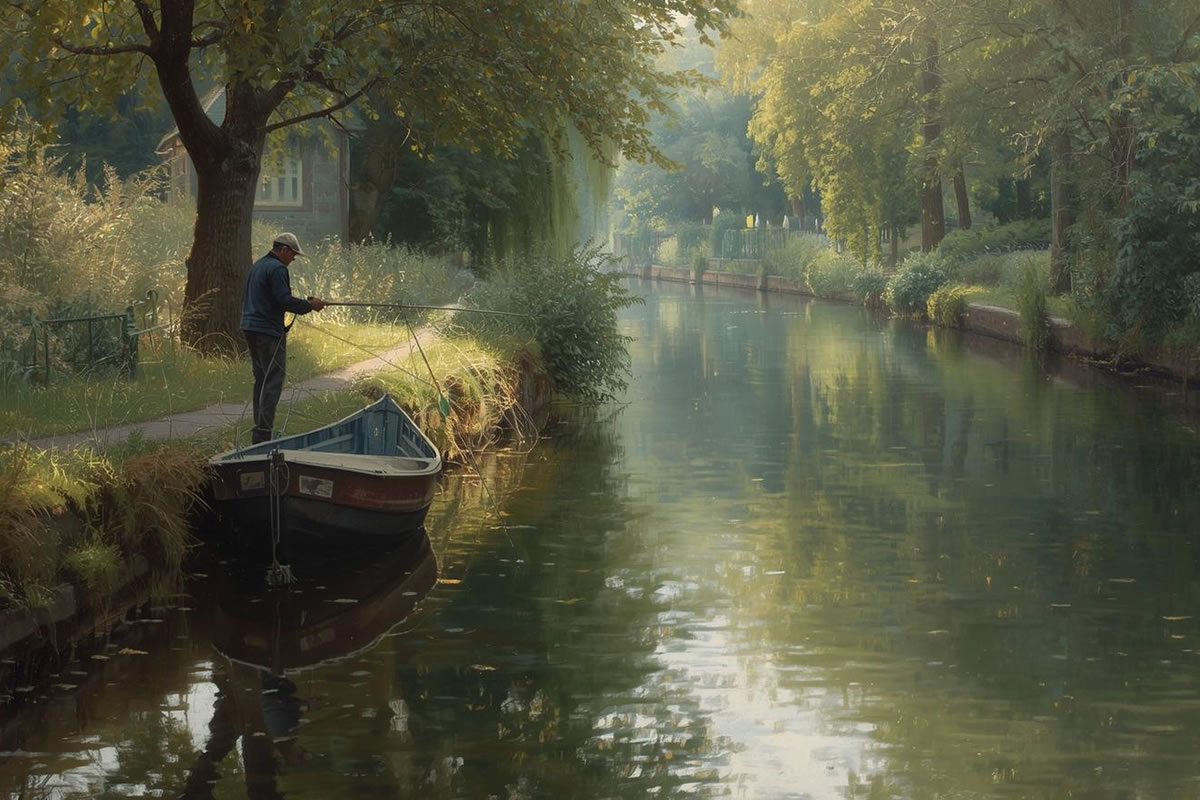
If you love slow, peaceful outings with a rod, a thermos and the occasional towpath stroll, South Wales’ canals are quietly brilliant. They mix history, wildlife and surprisingly good coarse fishing – ideal for beginners and seasoned anglers alike. Below I’ve rounded up the best canal spots in South Wales, what you can expect to catch, access/permit tips and a few practical pointers to make your day on the bank a success.
1. Monmouthshire & Brecon Canal – tranquil, fishy and scenic
The Mon & Brec is the go-to canal in the region: long, scenic stretches that wind through rural valleys and market towns. It’s well-maintained, quiet and excellent for coarse fishing – you’ll find roach, perch, bream, tench and the occasional pike depending on the stretch. There are club waters and public stretches; local angling associations run permits for certain reaches, and the Canal & River Trust provides maps and access information for anglers.
Where to fish: look for the quieter stretches between small towns (for example, around Pontypool and the Wye Valley approaches) – these tend to hold silverfish and bream shoals. If you want club waters with clearer rules, local angling clubs often sell day tickets.
2. Neath Canal – underrated variety of species
The Neath Canal and its linked feeder channels are better than many expect. Reports from local clubs show healthy populations of carp, tench, bream, roach, rudd, perch and even some pike – great if you like variety or targeting specimen fish. Some sections are controlled by angling clubs, but there are accessible stretches where a rod licence (and any local permit if required) is all you need.
Where to fish: aim for slightly wider, slower-flowing reaches and near old basins/docks where fish congregate. Early morning and dusk can be especially productive.
3. Glamorganshire Canal & Cardiff feeder canals – city fishing with character
While much of the original Glamorganshire Canal has been altered or filled in around Cardiff, remnants and feeder stretches (including dock feeder canals and lake edges near Forest Farm/Barry sidings) still hold carp, tench and coarse species popular with urban anglers. If you’re in the Cardiff area, clubs like Bute Angling (and local tackle shops and Facebook groups) are great starting points for permits, tips and up-to-date reports on which urban stretches are worth the trip.
Where to fish: the dock feeder canal in Cardiff has surprises – try quieter bank sections and look for features like submerged structure or canal bends where fish feel sheltered.
4. Swansea-area canals and urban waters – pockets of carp and specimen fish
Swansea’s canal/urban-water network and nearby club waters (e.g., certain lakes managed by local angling societies) produce good carp and coarse catches. While some premium lakes are club-only, there are public canal stretches and country-park ponds that can reward patient anglers. Check local fishing forums or tackle shops for current access and any day-ticket options.
Where to fish: look for wider sections, old wharves or canal basins where fish feed and rest. If you want specimen carp, club waters (where allowed) are often the best bet.
Practical tips — permits, etiquette & what to bring
-
Rod licence & local permits: In England & Wales, you need an Environment Agency rod licence for coarse fishing; many club-controlled canal stretches require a club day-ticket or membership – always check before you cast. Local angling clubs and tackle shops can point you to which stretches are public and which are club waters.
-
Best times and tactics: Early morning and dusk produce bites on most canal venues. Match the tackle to the likely species: light ledgering or pole work for roach and perch; feeder tactics and boilies or sweetcorn for carp and bream. Slow, patient fishing often pays off on canals – fish move slowly and respond well to steady baits.
-
Respect the towpath & wildlife: Canals are shared public spaces – be mindful of walkers, cyclists and dog walkers. Pack out what you bring in, don’t block the towpath with gear, and if you’re fishing for carp, use an unhooking mat and a landing net to reduce stress on fish.
-
Safety & access: Some canal banks are slippery or steep. Wear suitable footwear, avoid fishing alone in secluded stretches if safety is a concern, and take care near locks and basins.
Clubs, local knowledge and where to check before you go
Local angling clubs are gold mines of information – they manage stretches, stock waters and know seasonal hotspots. Tackle shops and regional fishing websites (and dedicated local forums) will often have the latest reports, membership details and day-ticket outlets. If you’re new to an area, a quick call to a club or shop can save a wasted trip.
For general canal maps and access notes, the Canal & River Trust provides useful guidance for the Monmouthshire & Brecon and other waterways; local tourism sites also highlight which waters are angler-friendly.
Final cast — where to start
If you’re planning a first trip to canal fish in South Wales, pick one of two approaches:
-
Rural and scenic: Head for the Monmouthshire & Brecon Canal for a relaxed day with a scenic backdrop and reliable coarse fishing.
-
Urban & convenient: Try Cardiff’s dock feeder or Swansea’s urban canals if you want quick access from town and the chance of surprise specimen fish — but check club rules first.
Whichever you choose, bring patience, check local rules, and enjoy the unique blend of wildlife, history and angling that South Wales’ canals offer. Tight lines!




